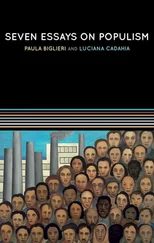Paul Graham - Essays
Здесь есть возможность читать онлайн «Paul Graham - Essays» весь текст электронной книги совершенно бесплатно (целиком полную версию без сокращений). В некоторых случаях можно слушать аудио, скачать через торрент в формате fb2 и присутствует краткое содержание. Жанр: Прочая околокомпьтерная литература, на английском языке. Описание произведения, (предисловие) а так же отзывы посетителей доступны на портале библиотеки ЛибКат.
- Название:Essays
- Автор:
- Жанр:
- Год:неизвестен
- ISBN:нет данных
- Рейтинг книги:4 / 5. Голосов: 1
-
Избранное:Добавить в избранное
- Отзывы:
-
Ваша оценка:
- 80
- 1
- 2
- 3
- 4
- 5
Essays: краткое содержание, описание и аннотация
Предлагаем к чтению аннотацию, описание, краткое содержание или предисловие (зависит от того, что написал сам автор книги «Essays»). Если вы не нашли необходимую информацию о книге — напишите в комментариях, мы постараемся отыскать её.
Essays — читать онлайн бесплатно полную книгу (весь текст) целиком
Ниже представлен текст книги, разбитый по страницам. Система сохранения места последней прочитанной страницы, позволяет с удобством читать онлайн бесплатно книгу «Essays», без необходимости каждый раз заново искать на чём Вы остановились. Поставьте закладку, и сможете в любой момент перейти на страницу, на которой закончили чтение.
Интервал:
Закладка:
If you're solving an important problem, you're going to sound a lot smarter talking about that than the business model. The business model is just a bunch of guesses, and guesses about stuff that's probably not your area of expertise. So don't spend your precious few minutes talking about crap when you could be talking about solid, interesting things you know a lot about: the problem you're solving and what you've built so far.
As well as being a bad use of time, if your business model seems spectacularly wrong, that will push the stuff you want investors to remember out of their heads. They'll just remember you as the company with the boneheaded plan for making money, rather than the company that solved that important problem.
Everyone at Demo Day could see the difference between the people who'd been out in the world for a while and had presented to groups, and those who hadn't.
You need to use a completely different voice and manner talking to a roomful of people than you would in conversation. Everyday life gives you no practice in this. If you can't already do it, the best solution is to treat it as a consciously artificial trick, like juggling.
However, that doesn't mean you should talk like some kind of announcer. Audiences tune that out. What you need to do is talk in this artificial way, and yet make it seem conversational. (Writing is the same. Good writing is an elaborate effort to seem spontaneous.)
If you want to write out your whole presentation beforehand and memorize it, that's ok. That has worked for some groups in the past. But make sure to write something that sounds like spontaneous, informal speech, and deliver it that way too.
Err on the side of speaking slowly. At Demo Day, one of the founders mentioned a rule actors use: if you feel you're speaking too slowly, you're speaking at about the right speed.
Startups often want to show that all the founders are equal partners. This is a good instinct; investors dislike unbalanced teams. But trying to show it by partitioning the presentation is going too far. It's distracting. You can demonstrate your respect for one another in more subtle ways. For example, when one of the groups presented at Demo Day, the more extroverted of the two founders did most of the talking, but he described his co-founder as the best hacker he'd ever met, and you could tell he meant it.
Pick the one or at most two best speakers, and have them do most of the talking.
Exception: If one of the founders is an expert in some specific technical field, it can be good for them to talk about that for a minute or so. This kind of "expert witness" can add credibility, even if the audience doesn't understand all the details. If Jobs and Wozniak had 10 minutes to present the Apple II, it might be a good plan to have Jobs speak for 9 minutes and have Woz speak for a minute in the middle about some of the technical feats he'd pulled off in the design. (Though of course if it were actually those two, Jobs would speak for the entire 10 minutes.)
Between the brief time available and their lack of technical background, many in the audience will have a hard time evaluating what you're doing. Probably the single biggest piece of evidence, initially, will be your own confidence in it. You have to show you're impressed with what you've made.
And I mean show, not tell. Never say "we're passionate" or "our product is great." People just ignore that—or worse, write you off as bullshitters. Such messages must be implicit.
What you must not do is seem nervous and apologetic. If you've truly made something good, you're doing investors a favor by telling them about it. If you don't genuinely believe that, perhaps you ought to change what your company is doing. If you don't believe your startup has such promise that you'd be doing them a favor by letting them invest, why are you investing your time in it?
Don't worry if your company is just a few months old and doesn't have an office yet, or your founders are technical people with no business experience. Google was like that once, and they turned out ok. Smart investors can see past such superficial flaws. They're not looking for finished, smooth presentations. They're looking for raw talent. All you need to convince them of is that you're smart and that you're onto something good. If you try too hard to conceal your rawness—by trying to seem corporate, or pretending to know about stuff you don't—you may just conceal your talent.
You can afford to be candid about what you haven't figured out yet. Don't go out of your way to bring it up (e.g. by having a slide about what might go wrong), but don't try to pretend either that you're further along than you are. If you're a hacker and you're presenting to experienced investors, they're probably better at detecting bullshit than you are at producing it.
When there are a lot of words on a slide, people just skip reading it. So look at your slides and ask of each word "could I cross this out?" This includes gratuitous clip art. Try to get your slides under 20 words if you can.
Don't read your slides. They should be something in the background as you face the audience and talk to them, not something you face and read to an audience sitting behind you.
Cluttered sites don't do well in demos, especially when they're projected onto a screen. At the very least, crank up the font size big enough to make all the text legible. But cluttered sites are bad anyway, so perhaps you should use this opportunity to make your design simpler.
If you have any kind of data, however preliminary, tell the audience. Numbers stick in people's heads. If you can claim that the median visitor generates 12 page views, that's great.
But don't give them more than four or five numbers, and only give them numbers specific to you. You don't need to tell them the size of the market you're in. Who cares, really, if it's 500 million or 5 billion a year? Talking about that is like an actor at the beginning of his career telling his parents how much Tom Hanks makes. Yeah, sure, but first you have to become Tom Hanks. The important part is not whether he makes ten million a year or a hundred, but how you get there.
The biggest fear of investors looking at early stage startups is that you've built something based on your own a priori theories of what the world needs, but that no one will actually want. So it's good if you can talk about problems specific users have and how you solve them.
Greg Mcadoo said one thing Sequoia looks for is the "proxy for demand." What are people doing now, using inadequate tools, that shows they need what you're making?
Another sign of user need is when people pay a lot for something. It's easy to convince investors there will be demand for a cheaper alternative to something popular, if you preserve the qualities that made it popular.
The best stories about user needs are about your own. A remarkable number of famous startups grew out of some need the founders had: Apple, Microsoft, Yahoo, Google. Experienced investors know that, so stories of this type will get their attention. The next best thing is to talk about the needs of people you know personally, like your friends or siblings.
14. Make a soundbite stick in their heads.
Professional investors hear a lot of pitches. After a while they all blur together. The first cut is simply to be one of those they remember. And the way to ensure that is to create a descriptive phrase about yourself that sticks in their heads.
Читать дальшеИнтервал:
Закладка:
Похожие книги на «Essays»
Представляем Вашему вниманию похожие книги на «Essays» списком для выбора. Мы отобрали схожую по названию и смыслу литературу в надежде предоставить читателям больше вариантов отыскать новые, интересные, ещё непрочитанные произведения.
Обсуждение, отзывы о книге «Essays» и просто собственные мнения читателей. Оставьте ваши комментарии, напишите, что Вы думаете о произведении, его смысле или главных героях. Укажите что конкретно понравилось, а что нет, и почему Вы так считаете.











